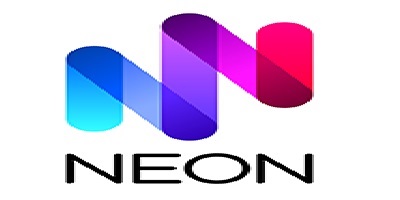IRS submission doesn’t have to be a puzzle. Find out what you need to do to easily submit your tax return.
IRS submission is becoming increasingly simple. In 2021, more taxpayers are covered by the automatic IRS, which means that they only have to confirm the declaration automatically filled in by the Tax Authority (AT).
Learn in this article the essential steps to fill out your statement and learn about the news of the IRS in 2021.
What changes in the IRS in 2021?
The main change in the IRS concerns the increase in the value of the minimum existence, that is, the income up to which taxpayers are exempt from paying IRS.
The State Budget for 2021 approved a measure, on an exceptional basis, which raises the minimum existence for 2020 income to €9,315.01 . This means that those who received less than this amount do not pay tax in 2021.
Note, however, that only those who hae earned income from work or pensions of less than €8,500 per year are exempt from submitting the declaration. If your income was higher, even without paying tax, you must submit the return.
For the rest, other measures of the State Budget for 2021 such as changes in the withholding tables or the deduction of VAT for the requirement of invoice in gyms and veterinary medicines only apply to 2021 income and expenses. will take practical effect in 2022, when you submit the IRS tax return for 2021.
Even so, the declaration to be presented this year brings some novelties, which you can find out in detail in this Tax Authority document, like tin, but which we present in a summarized way, emphasizing the most important ones.
One of them is that the dependents in foster care become part of the household. The foster families must identify, on the cover page (Table 6C), the dependent in question and the start and end dates of foster care. In Annex H, where the tax deductions and benefits are presented, you can also indicate the expenses with health, education and training of that dependent.
Initially, it was foreseen that the extraordinary support to the reduction of the economic activity of the self-employed would also be subject to IRS, however, this will not be taxed. In this way, self-employed workers will not have to declare the values of support for the reduction of activity, nor the values of extraordinary support for workers.
Annex B also has a new field for income from local accommodation inserted in a containment zone, which is now considered at 50% for taxation purposes.
IRS submission deadline
The IRS declaration must be submitted between April 1 and June 30. The submission process is done through each contributor’s page on the Finance Portal.
Some taxpayers choose to deliver within the first few days so that the refund arrives faster. However, many accountants advise you to wait a few days, so that any problems on the Finance website can be corrected.
How to fill the IRS step by step
Although in most cases the declaration already has some fields pre-filled, you can consult the forms and the corresponding instructions for filling online. In this document there are also codes and other references that are inserted and that can be useful if you want to confirm the data entered by the AT or fill in your own declaration.
All this information is available on the Finance Portal for all income categories. See here for information on Annex A and Annex B.
Let us now see, in a more succinct way, what you must take into account in relation to the declaration, which is composed of the cover and the annexes.
In the first part, you must confirm or indicate the information regarding your identification, marital status or number of dependents, but also the IBAN, so that the refund can be paid by bank transfer.
It is also here that you inform if you want to consign the IRS and/or VAT or if, being married or in a de facto union, you want to opt for joint or separate taxation.
The annexes include information on the income obtained and the expenses incurred. Here are the existing attachments:
- A: Dependent work and pensions
- B: Category B income (business and professional) – Simplified Regime / Isolated Act
- C: Category B income (business and professional) – Organized Accounting Regime
- D: Fiscal transparency – allocation of income; Undivided inheritance – imputation of income
- E: Income from capital
- F: Building income
- G: Capital gains and other equity increments
- G1: Untaxed capital gains
- H: Tax benefits and deductions
- I: Income from undivided inheritance
- J: Income earned abroad
- L: Non-habitual resident.
Annexes A and H are the most used, as they relate, respectively, to income from work and pensions and to tax benefits and deductions. In these cases, the values are already pre-filled and, in principle, you just have to confirm.
In the case of Annex A, you may also have to indicate another type of remuneration, such as, for example, severance payments, membership of the Youth IRS or alimony. For each case there is a specific code that appears in the filling instructions.
How to validate?
After completing the declaration, you must validate it. You will see Validate the Declaration in the upper right corner.
If any field is wrong, the corresponding boxes are highlighted in red and you must correct them.
It is also at this time that you can do the simulation and understand, for example, whether it is more advantageous to deliver the declaration together or separately. You will see, for each of the options, the amounts payable or receivable and you can choose the situation that allows you to receive more or pay less .
When simulating, you also know if you are entitled to a refund or if you will have to settle accounts with the Tax Authorities and pay. In both cases the values are presented.
To complete the process, simply click on Submit. The declaration will still have to be validated by the AT, which takes a few days.
automatic income tax
It is quite likely that in 2021, you will not have to spend a lot of time filling out the IRS return. The Government estimates that around 3.6 million taxpayers are covered by the automatic IRS, which this year will also reach some independent workers.
who is covered
The automatic IRS covers, in 2021, taxpayers who meet the following conditions:
- Receive only income from dependent employment or pensions, excluding income from alimony; or
- Receive only category B income, provided that the following conditions are also met:
- Simplified taxation regime
- Registration in the AT database on 12.31.2020 for the exclusive exercise of activities included in the Table of Activities provided for in article 151 of the IRS Code, except for the activity with code 1519 (Other service providers)
- Issuance of invoices, invoice-receipts and receipts exclusively on the Finance Portal and Electronic Receipt System (SIRE)
- Have income taxed by release rates but do not opt for aggregation
- Only earn income in Portugal
- Live in Portugal throughout the year
- Do not hold Non-Habitual Resident status
- Do not enjoy tax benefits, with the exception of the benefits of deduction from the collection of PPR amounts applied, donations and as long as they do not have debts on 12.31.2020 still to be settled
- Have not paid alimony
- Are not entitled to deductions for dependents of the family unit and ascendants who live in common housing with the taxable person
- Do not have to declare amounts of tax benefits that they used and that now have to be replaced
- Do not have deductions for people with disabilities, international double taxation and AIMI (Additional Municipal Property Tax).
What to do if you have automatic IRS?
In this case, the declaration is already pre-filled with the information (income, expenses and contributions) that the AT has.
Thus, between April 1 and June 30, you only have to consult this declaration, confirm that the data are correct and validate. Just click on the Confirm button and save the receipt.
If you do not agree with the values that are presented to you or if you detect incorrect data, you must waive the automatic IRS and submit a normal return. Remember that in the automatic IRS it is not possible to make changes.
Married or unmarried taxpayers are presented with a provisional declaration for each tax regime (separate and joint) and can choose whichever is most advantageous.
If you do not confirm the automatic declaration or submit another normal one (Model 3), the provisional declaration is converted into a definitive one as soon as the deadline for submission ends (30 June).
How to accept and confirm
After verifying that the data are correct and choosing the taxation regime (separate or joint) just click on Accept.
Next, you will see a new screen with the identification of the declaration and corresponding settlement; check and confirm or correct the IBAN that appears. If everything is correct, check the field: “I have read and understood the conditions”. Then just click on Confirm.
Refunds: what you should know
If you are entitled to a refund and the declaration was delivered within the legal deadline, it must be done by 31 August.
To receive faster, you must indicate your IBAN so that the payment can be made by bank transfer. Otherwise, a check will be issued to your tax address.
If the amount to be returned is less than ten euros, there is no refund.





